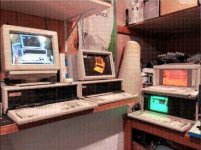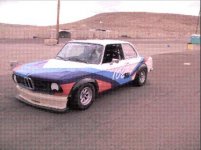resman
Veteran Member
About 30 years ago I wrote a few Windows display drivers for various HW platforms. In doing so, one algorithm I always defaulted to the Microsoft implementation was the RGB dithered brush generation. Always short on time and the sample code from MS, either x86 assembly or even the C code, was enough to make a grown man cry, I never got around to implementing my own. Playing around with VGA code last week I decided to revisit the dithered brush code. After a little investigation, I settled on a very simple approach that has me wishing I'd spent the time on it back in the day. I put a github project together here: https://github.com/dschmenk/DITHER16
Here are some samples:


Edit:
The forum shrunk the images to the point of in distinguishing the dither. Better images are on GitHub.
Here are some samples:


Edit:
The forum shrunk the images to the point of in distinguishing the dither. Better images are on GitHub.
Last edited:
